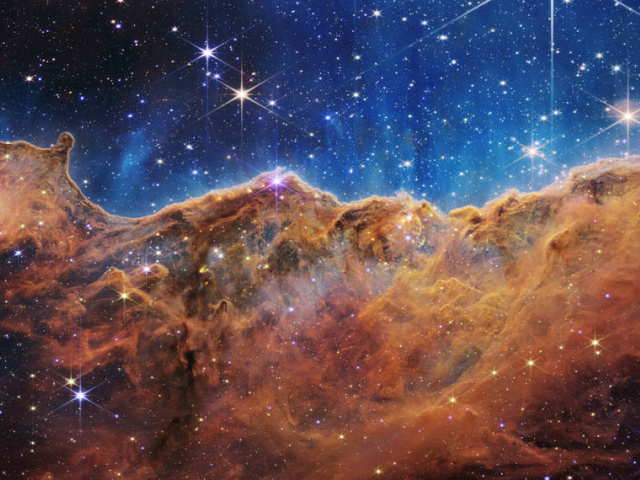People in Times Square in New York City were treated Monday to the first images released by NASA from the world’s most powerful telescope, the James Webb Space Telescope.
The official Twitter account of Times Square NYC shared the video of pictures displayed at the square, with a caption, “Absolutely breathtaking views of the @NASAWebb telescope’s first full-color images to the world #UnfoldTheUniverse @OneTimesSq @NASA.”
Check out the deepest and highest-resolution infrared views of our universe on display at @Nasdaq @NASA 💫✨ #UnfoldTheUniverse @NASAWebb pic.twitter.com/x1KAJAvHdd
— Times Square (@TimesSquareNYC) July 12, 2022
The Republic World website reported on some of the images NASA has released that give humanity the deepest look into space:
Galaxy cluster SMACS 0723 was depicted in the first image that was previously released. A composite image called Webb’s First Deep Field was created using several images captured at various wavelengths. Images captured by the Near-Infrared Camera (NIRCam) were used to create it. Then, images of the Carina Nebula, WASP-96 b (spectrum data), Southern Ring Nebula, and Stephen’s Quintet were released by NASA.
Space is lovely, dark and deep. You're looking at the deepest infrared image of the universe ever taken—the first full-color image from @NASAWebb.
Go deeper on the galaxies of SMACS 0723 at https://t.co/63zxpNDi4I #UnfoldTheUniverse pic.twitter.com/YS8JZI3KqM
— NASA (@NASA) July 12, 2022
The Carina Nebula, 7,600 light-years away, is a stellar nursery where stars are born. According to CNN, it is one of the biggest and brightest nebulae in the sky and is home to numerous stars that are many times as massive as the sun. The stunning new image, which provides “a rare peek into stars in their earliest, rapid stages of formation,” according to NASA, shows the “Cosmic Cliffs,” which were previously hidden baby stars.
Hundreds of new stars.
Examples of bubbles and jets created by newborn stars.
Galaxies lurking in the background.@NASAWebb Deputy Project Scientist Amber Straughn details new discoveries about Carina Nebula. https://t.co/63zxpNDi4I #UnfoldTheUniverse pic.twitter.com/37mxH2GvfO— NASA (@NASA) July 12, 2022
This compact galaxy group is 290 million light-years away in the constellation Pegasus and was first identified in 1787. According to a NASA statement, four of the group’s five galaxies “are locked in a cosmic dance of repeated close encounters.” The “Eight-Burst,” also known as the Southern Ring Nebula, is located 2,000 light-years from the Earth. There is an expanding gas cloud surrounding a dying star in this large planetary nebula.
The Webb Telescope is a joint project of the U.S., European, and Canadian space agencies. The telescope is designed to see the sky in infrared, which is light with longer wavelengths than the human eye can detect.
Follow Penny Starr on Twitter

COMMENTS
Please let us know if you're having issues with commenting.